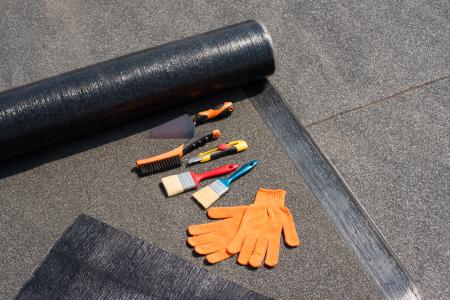Roof Underlayment: A Vital Component

Everyone sees the roof and knows exactly what a roof does, but what they don't see, and what is a critical component of roofing, is the underlayment. It's what must be installed between the roof planking and the shingles. Commonly referred to as tar paper but now dubbed underlayment, this barrier is mounted directly on the roof deck, which is supported by trusses. This sheeting typically is plywood, oriented strand board, or step sheathing.
Whether this is part of new construction or roof replacement, it's important to consider which underlayment options are available. Roofing experts will use one of three types of underlayment:
- Asphalt-saturated felt
- Rubberized asphalt
- Non-bitumen synthetic
Asphalt-saturated felt features a basemat, or a flexible base layer, saturated with asphalt for water resistance. It is applied across the entire roof deck. And since South Florida is subject to rain fairly frequently, waterproof underlayment may be recommended by a roofing contractor. Rubberized asphalt usually employs a sticky back with a protective layer that is removed prior to installation. This backing creates a waterproof seal between the underlayment and the roof deck.
Non-bitumen underlayment is the preferred underlayment of most roofing professionals today, according to many roofing experts. It is saturated in asphalt, and the addition of fiberglass gives it superior tear resistance and a high level of stability.
Is Underlayment An Absolute Must?
Underlayment is vital to ensuring water does not seep onto the roof decking. This is especially important in South Florida, with its high levels of humidity and the constant threat of rain.
Local building codes will call for underlayment, and shingle manufacturers will require an underlayment as part of their warranty. Even though it's an added cost, underlayment is absolutely necessary to ensure your roof is 100% leak-free and it remains durable for many years.
Are Tar Paper and Underlayment The Same Thing?
Tar paper and roofing felt are somewhat similar in that they both shed water. However, actual tar paper is less wind and sun resistant than other underlayment systems and would provide only minimal protection if left exposed over a period of time. But synthetic underlying is sturdy and waterproof and can withstand the pounding of the elements, though as a roofing material, it provides insulation and a crucial layer of protection between the roof decking and either shingles or metal roofing.
Of course, when you choose a professional like Panela Roofing for your roof replacement needs, we will walk you through the process and make sure your property is well taken care of.
As always, if you have questions, it's best to ask a trusted roofing contractor. Panela Roofing is always happy to provide answers, and our team is standing by at 954-865-2073.

Roof Replacement? Roof Repairs? Contact Only the Best Fort Lauderdale Roofing Contractor Today